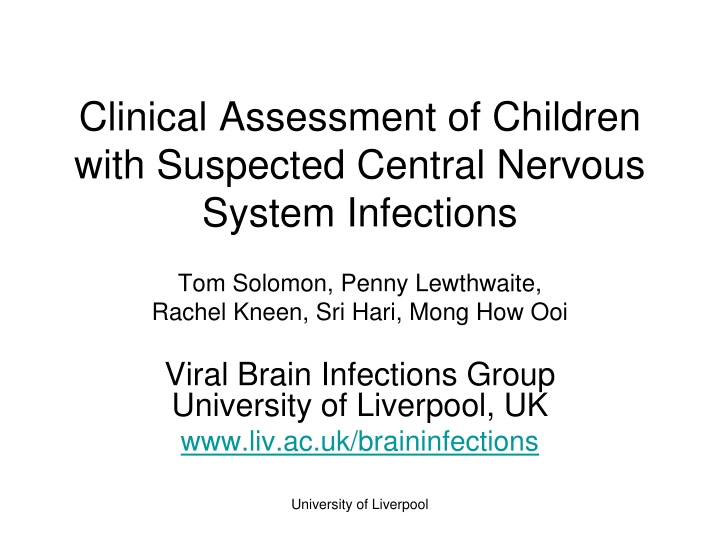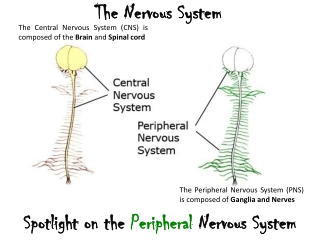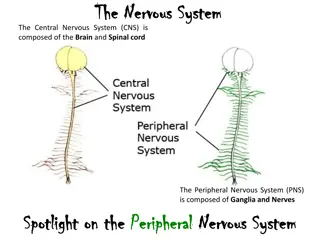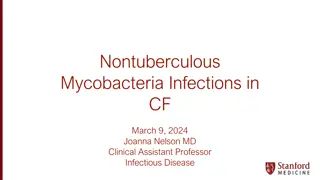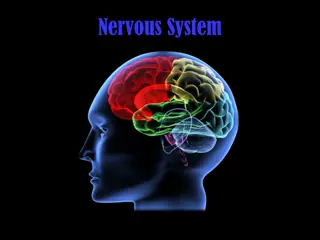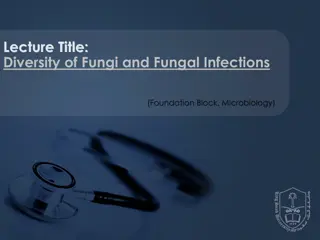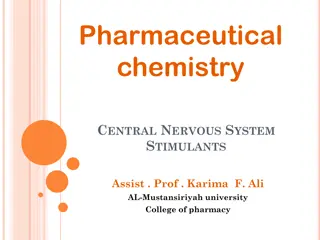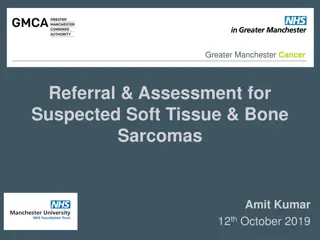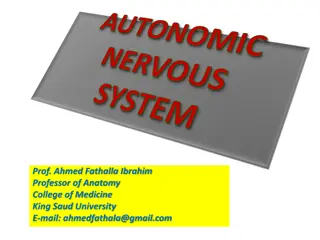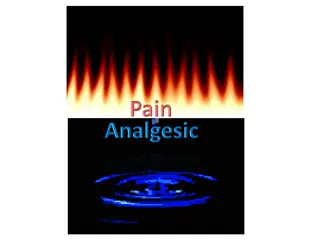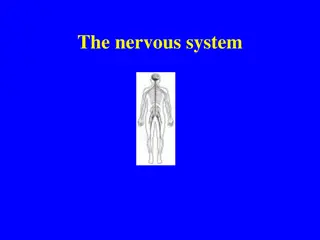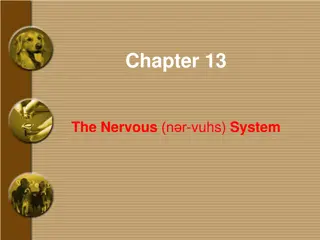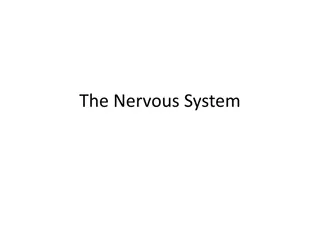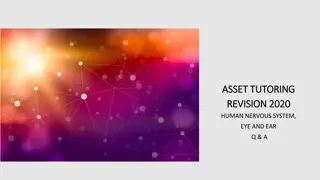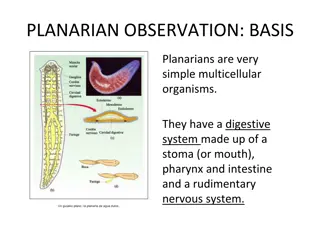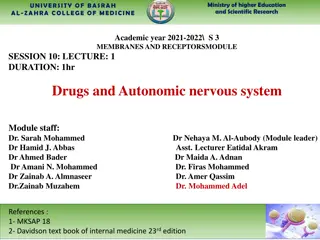Clinical Assessment of Children with Suspected Central Nervous System Infections
This teaching tool provides insights and guidance for clinicians and healthcare workers in areas where Japanese encephalitis is prevalent. Developed with support from the JE Program, University of Liverpool, and PATH, it offers valuable information on assessing sick children with suspected central nervous system infections. The tool covers topics such as history, epidemiology, and resources available for healthcare workers. It emphasizes the importance of considering Japanese encephalitis in areas where it occurs, asking relevant questions, and addressing specific issues related to this condition.
Download Presentation

Please find below an Image/Link to download the presentation.
The content on the website is provided AS IS for your information and personal use only. It may not be sold, licensed, or shared on other websites without obtaining consent from the author.If you encounter any issues during the download, it is possible that the publisher has removed the file from their server.
You are allowed to download the files provided on this website for personal or commercial use, subject to the condition that they are used lawfully. All files are the property of their respective owners.
The content on the website is provided AS IS for your information and personal use only. It may not be sold, licensed, or shared on other websites without obtaining consent from the author.
E N D
Presentation Transcript
Clinical Assessment of Children with Suspected Central Nervous System Infections Tom Solomon, Penny Lewthwaite, Rachel Kneen, Sri Hari, Mong How Ooi Viral Brain Infections Group University of Liverpool, UK www.liv.ac.uk/braininfections University of Liverpool
Introduction This teaching tool has been developed at the request of clinicians and health care workers in areas where Japanese encephalitis (JE) is endemic It has been produced with the financial support of the JE Program, PATH, Seattle Two versions exist: A smaller file with no video clips which is available for download A larger file with video clips which is available on CD ROM The tool is freely available, but when using it, please acknowledge the University of Liverpool, UK and PATH, (or give other credits as indicated) University of Liverpool
Other resources There are many other excellent resources available to aid health care workers in assessing sick children, and examining the nervous system Health care workers are advised to refer to them for a detailed consideration of the topics This tool is an additional resource, that addresses specifically some of the issues relating to children with suspected Japanese encephalitis University of Liverpool
History General questions For the sick child, ABCD first Airways, Breathing, Circulation, Disability Ask about: Fever, history of fever Note that even if a child is not febrile at this time, a history of fever is important Cough, coryza Diarrhoea, vomiting Food and fluid intake Urine output Immunization history University of Liverpool
History relating to JE epidemiology Is this an area where JE occurs? Is this the JE season? In much of the tropics the season begins soon after the rainy season However in many areas there is low level transmission even out of season Have other children been developing a similar illness? Does the child live in a rural area, where JE is more likely? Note that JE also occurs on the edges of some cities in Asia University of Liverpool
Are there epidemiological features to suggest that this is NOT JE? Are animals becoming sick? In most of Asia where JE is endemic, the virus does not cause disease in birds or swine (though it may cause abortions in pregnant swine) Are many adults affected? In most of Asia where JE occurs it causes less disease in adults than children (or no disease in adults at all), because most individuals have been exposed to the virus and developed immunity during childhood University of Liverpool
History relating to neurological disease Ask about: Stiff neck Photophobia (fear of light), phonophobia (fear of noise) Confusion / irritability / restlessness / mutism Altered behaviour Sometimes mistakenly attributed to psychiatric illness High pitch cry Limb weakness Has the child stopped walking, or stopped using one hand University of Liverpool
History of seizures or abnormal movements Ask about abnormal movements of eyes, face, limbs When taking a history, distinguishing convulsions from spasms, tremors and rigors is difficult. Actions speak loader than words! Get the parent to mimic exactly what the child did. They are more likely to do this of the health care worker sets an example The distinction is important because Seizures may need anticonvulsant drugs Characteristic spasms and tremors are seen in some types of viral encephalitis (eg.g JE), and so may point towards the diagnosis University of Liverpool
Paediatric examination in practice Observation is the key. A full formal neurological examination is time consuming and will not be tolerated by small children, however you can do much of the examination by just observing Click Here for revision of a more detailed neurological examination, which may be possible in older children who are fully cooperative University of Liverpool
Examination - General Observe the child s behaviour and actions, even whilst taking the history. Look for: Skin turgor Capillary refill time Rash, petechiae/non-blanching Bruising Positive tourniquet test Examine the ear nose and throat University of Liverpool
Remember: The examination is not complete without an examination of other systems, including skin, respiratory, cardiovascular gastrointestinal systems. University of Liverpool
Assess the breathing rate and pattern, and listen to the chest An abnormal rate and pattern may indicate Aspiration pneumonia, which is common in JE Metabolic acidosis, which is common in any sick dehydrated child Brain stem damage, which is common in JE University of Liverpool
Neurological examination Observe, as much as you can, before disturbing the child Begin to examine with minimal disturbance Examining the uncooperative child can be difficult Look for:- Bulging fontanelle Neck stiffness Test for Kernig sign With the child lying on their back, and the hip and knee flexed, extend the knee The test is positive if this causes back pain Reduced spontaneous movements of one or more limb Abnormal limb posture University of Liverpool
Assess the coma score The Glasgow coma score is the most widely used score A modified coma score exists for children <5 years old A simple AVPU score allows a very rapid initial assessment, and is better than nothing University of Liverpool
Abnormal movements and seizures Abnormal movements of face or mouth (orofacial dyskinesias common in JE) Limb tremors (common in JE) Seizures Generalised tonic clonic seizures Subtle motor seizures These may indicate a child is in electrical status epilepticus University of Liverpool
Examine the eyes Assess the pupillary reactions to light Poorly reactive or asymmetrical pupils may indicate brain stem damage Test the oculocephalic reflex (doll s eye reflex) Normally the eyes remain central when the head is rolled to left and right Abnormality of this reflex may indicate brainstem damage Examine the optic discs for papilloedema Not often seen in JE University of Liverpool
Other signs of brainstem damage Check gag reflex lost in deep coma, or brainstem damage Look for facial asymmetry in response to pain, if necessary Look for Opisthotonus Flexor ( decorticate ) posturing Extensor ( decerebrate ) posturing University of Liverpool
Assessing tone in the arms Examine tone in the arms Gently bend the arm at the wrist and elbow joints, use circular movement Is there cog-wheel rigidity? University of Liverpool
Examining tone in the legs Gently roll the leg from side to side Does the foot gently rock? (normal) Does it flop about too much? (flaccid tone) Or is it stiff (increased tone) Hold the leg behind the knee, and quickly pull the knee off the bed. Does the whole leg lift up (increased tone) Or does the heel remain on the bed? (normal) Test for flaccid tone with the frog s legs test Do the legs flop out because of reduced tone? Test for ankle clonus: with the knee flexed, quickly flex the ankle and hold the pressure on If there more than 5 beats this is a positive test for ankle clonus University of Liverpool
Examining the reflexes First demonstrate the use of the tendon hammer on yourself or an assistant, so that the child is not frightened. Test upper limbs biceps, triceps, supinator Test lower limbs, knee jerk, ankle jerk Are the deep tendon reflexes: Normal Increased (upper motor neuron damage) Decreased/absent (lower motor neuron damage) Test plantar (Babinski) reflexes Are they flexor (down, normal), or extensor (up, abnormal) University of Liverpool
Further PNS examination Examine limb movement Observe: is there spontaneous movement of all 4 limbs? If not, do all limbs withdraw from pain? Test Abdominal reflexes often absent in JE if the spinal cord is involved Is the bladder distended? Due to bladder muscle paralysis, common in JE University of Liverpool
Gait If the child is able to walk, observe the gait, and also ask them to try heel toe walking University of Liverpool
References General Advanced Paediatric Life Support the Practical Approach. 2nd edn. Advanced Life Support Group. BMJ Books, 1997 Gunn VL, Nechyba C, eds. The Harriet Lane Handbook: a manual for pediatric house officers.16th ed. St.Louis, MO: Mosby-Year Book, Inc.; 2002. Solomon, T. and R. Kneen (2004). Neurological Presentations. Lecture Notes on Tropical Medicine. N. Beeching and G. Gill. Oxford, Blackwell Science. Glasgow Coma Scale Teasdale G, Jennett B. Assessment of coma and impaired consciousness. A practical scale. Lancet 1974;2:81-4. James modification of Coma Scale for children < 5 years James, H. and D. Trauner (1985). The Glasgow Coma Scale. Brain insults in infant and children. Pathophysiology and management. H. James, N. Anas and R. Perkin. Orlando, Grune and Stratton: 179 82. University of Liverpool
Acknowledgements We are grateful to the children, their parents and guardians for granting permission for the videos and photos used in this teaching tool We also thank the Director Dr K Naseeruddin, the Head of Paediatrics Dr Veera Shankar, and the Head of Medical Microbiology Dr R Ravikumar, of Vijayanagar Institute for Medical Science (VIMS), Bellary, India, for their support This teaching tool was funded by the JE program at PATH. The Medical Research Council of the United Kingdom, and the Wellcome Trust of Great Britain funded some of the work shown here. Please send comments and suggestions to tsolomon@liv.ac.uk or via www.liv.ac.uk/braininfections University of Liverpool
